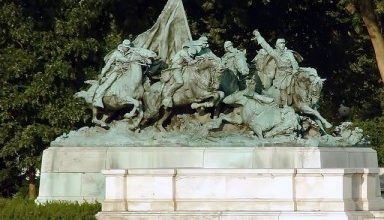
The Widow’s Might by Charlotte Perkins Gilman is a powerful tale of a woman’s bid to overcome the societal and familial pressures that seek to shape her identity. It follows the life of a “widow” who is strong enough to stand up for herself and decide her own destiny. Independence, women empowerment, self-sufficiency and duty are some of the themes that the story explores.
Want to read the story? Click here.
The Widow’s Might displays feminist consciousness by giving its protagonist her autonomy. The story questions the notion that women are supposed to be always managed by people around them. It shatters the perception that a woman’s life begins and ends in the service of those around her. While Mrs. McPherson’s choice can be considered subversive to the patriarchal societal order, it is the most important, and perhaps the only key with which she can open the portals that open her path to where she wants to be and who she intends to become.
The Widow’s Might | Summary
The story opens with a conversation between three siblings, James, Ellen and Adelaide. A funeral has recently taken place for their father, and they have visited their home to attend the service. Apparently, they are negotiating over who gets to keep their mother with them. They all have some reason or another as to why their mother shouldn’t live with them. Nevertheless, they are trying to figure out a way to provide for her after the death of their father, believing it is their duty to do so. The three siblings are attempting to estimate how much money would be needed and who would pay. Meanwhile, they will be visited by a lawyer at four to hear their father’s will. They speculate that there isn’t much money left, and as their discussion progresses, the readers learn that the family members aren’t particularly close to each other.
We also learn from their conversation that after their father died, their mother took complete responsibility for the house and hired a male nurse to care for their father. Every family member is simply carrying out what they believe is their obligation to the other. When the lawyer, Mr Frankland, comes, Ellen conveys the message to her mother. Her mother, in response, advises her to ask the lawyer to read the will and she’ll be down in a few minutes. The will is short. After the mother’s legal portion had been reduced, the inheritance would be left to be split amongst children in four equal parts, two to the son and one to each of the girls. In this circumstance, they were also told to look after their mother while she was still alive. Mr Frankland also tells the gathering that the will was made ten years ago.
The will is then dismissed as an old will by a tall woman in a black cloak and veil who enters the room. This woman is Mrs McPherson. She then discloses that Mr McPherson (her husband) transferred all of his property into her name three years and a half before his death, leaving him with no property at the time of his death. Her children are displeased with the situation since they wanted to finish up all of the property-related proceedings and take her with them. While the children urge their mother to give up the property, she claims it legally and refuses to give in to the wishes of her deceased husband or those in her immediate vicinity. The lawyer proposes that she consider her children, but she denies that the people in the room are not her “children”. She characterizes them as three adults with families and lives of their own. She confronts them about
her weariness with her duties. She then reveals that she is willing to pay his son two thousand dollars and each of her daughters one thousand dollars because their father’s property was valued at eight thousand dollars at the time of his death. When he learns of this, the son wonders whether his mother would not need the money. In response to this query, she explains how she earns two thousand a year from the rent after converting her home into a kind of hospital. When asked about her future plans, she says she’ll be travelling to New Zealand – Australia – Tasmania – Madagascar – Tierra del Fuego and do what she hasn’t done before.
The Widow’s Might | Analysis
Narration : The story is narrated by a third-person omniscient narrator. A third-person omniscient narrator allows readers to participate with all of the character’s feelings or lack thereof.
Setting : The story is set on a ranch in the American countryside.
The Widow’s Might | Title
Widows are often seen to be meek and quiet, although the word ‘might’ in the title indicates otherwise. The term widow appears in the title as a common noun rather than a proper noun, implying that the story may be about a group rather than an individual. The protagonist’s title of ‘The Widow’ also reflects the societal significance of marriage and the labels associated with it.
The Widow’s Might | Themes
Independence – The fundamental theme of the story is women’s independence. Even though Mrs. McPherson claims freedom for the last thirty years of her life, she was oppressed for the first fifty. It’s worth noting that the real name of Mrs. McPherson is never disclosed. She is referred to as the “widow” in the title, her children call her mother, and the lawyer addresses her Mrs. McPherson. She is always alluded to in terms of her interpersonal relationships. But towards the end, she takes control of her life after rejecting the life her children had planned for her. The story is made all the more powerful by the exercise of this autonomy, which allows women to be who they want to be rather than being defined by their responsibilities.
Familial relationships – The family members have an unusual relationship. Everything they do for each other is out of obligation rather than love and respect. The repeated insistence that it is their responsibility to provide for their mother, or that their parents always took care of their responsibilities, implying that they are doing their part as reciprocity, gives the appearance of the collapse of the family unit. There is no attachment between the siblings, and they are all attempting to profit materially from the circumstance. The death of the father is not portrayed in a remorseful manner, and the children are unconcerned about their father’s death. All they want is to manage the estate and leave so that they could carry on with their personal lives.
Duty – Doing one’s duty is insufficient to win affection. Despite the fact that she raised her children, Mrs McPhereson was despised by them. Despite providing for him his entire life, the Father wasn’t really loved by his children. Mrs McPhereson uses her husband’s burial as an opportunity to abandon her responsibilities and live the glamorous life of her dreams.
The Widow’s Might | Characters
Mrs. McPherson – Mrs. McPherson, the “widow” of the story devoted the first fifty years of her life to serving others, including her family, spouse, and children. She set aside her own desires to take care of theirs. But after the death of her husband, she plans to spend the next thirty years on herself. She tries to convey that she is a person with dreams, even if her children and society regard her as an object that just serves obligations. She earns new independence by refusing to hand over her inheritance, which she intends to use to explore the world. She isn’t bitter and self-centred and allows her children to take what they would have received as part of an inheritance. She has a rebellious attitude, refusing to feel sorry for the time she had lost and instead of making the most of the time she had left, allowing no one to stand in her way. She is a sharp woman who managed to maintain her independence when her husband was ill and intends to take control over her life after his death.
The Children (James, Ellen and Adelaide) – The children are materialistic. They are ungrateful for their mother’s sacrifices, seeing her as a burden rather than a blessing. Despite their hatred for their father, they grew up to be as indifferent and hardhearted as he was.
Mr McPherson – We never get to meet Mr. McPherson. But with the description provided by his wife, he could be viewed as an obvious patriarchal figure who controls everything going around him. His children don’t like him and they just refer to him in terms of how well he performed his duties. His relationship with his wife wasn’t very loving since the wife doesn’t seem much affected by his death.
The Widow’s Might | Literary Devices
Symbolism: The removal of the black cloak and the veil by the “widow” which is supposed to be a symbol of mourning symbolizes her freedom. Her travelling suit made of dull mixed colours represents her future which is going to be according to her choices rather than something being imposed on her by someone else.
Repetition: The use of the word “duty” in relation to Mother demonstrates how the “widow” is considered a burden by her children.
Satire : The story satirizes social norms and roles attributed to women. It also questions the validity of a passive position that they are often is relegated into.
About the Author | Charlotte Perkins Gilman
Charlotte Perkins Gilman, a lecturer and author, was one of the key theorists of the American women’s movement. Perkins began writing poems and short stories for several publications after relocating to California in 1888. “The Yellow Wall-Paper,” published in The New England Magazine in January 1892, was distinguished among her pieces for an acutely realistic depiction of a young woman suffering from a mental breakdown as a result of insufficient emotional support.
Perkins published Women and Economics in 1898. By advocating economic independence for women, she shattered much of the romanticized orthodoxy surrounding contemporary conceptions of motherhood as well as womanhood. In Concerning Children (1900) and The Home (1903), she elaborated on themes relating to household chores and childcare responsibilities. The arguments in Women and Economics were continued in Human Work (1904). In The Man-Made World (1911), she portrayed men and women as having different virtues and vices and connected the ills of the world to male dominance.


